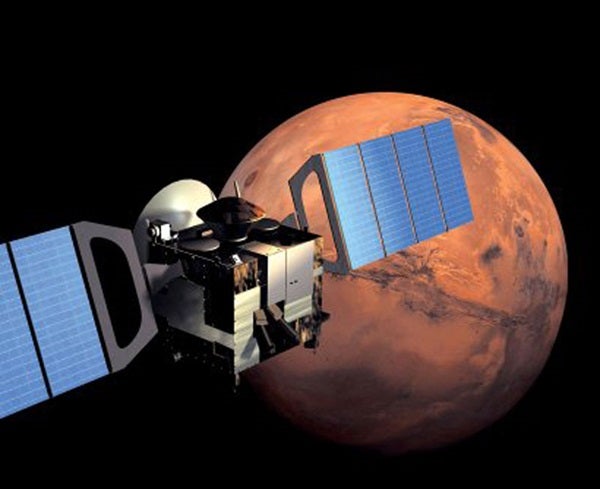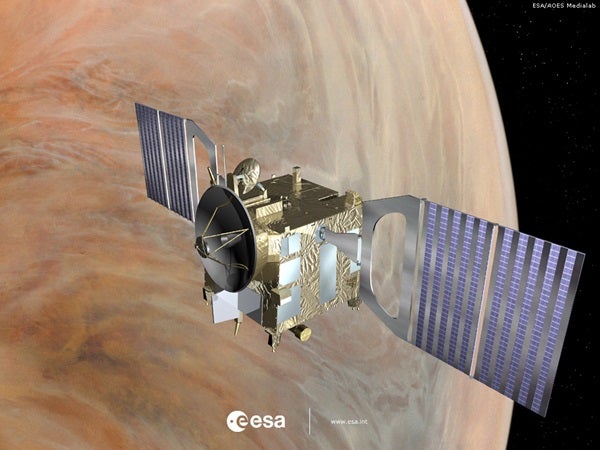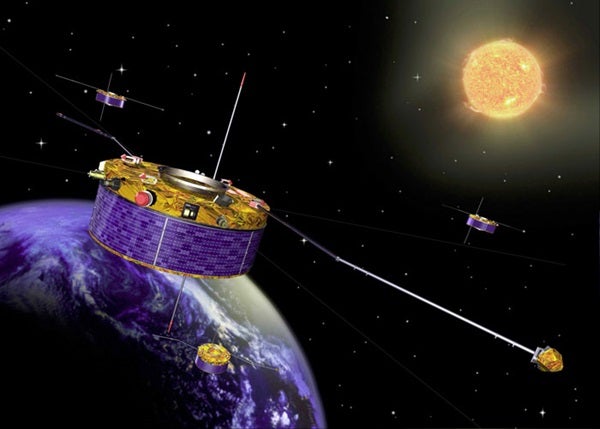European Space Agency’s (ESA) Science Program Committee extended the operations of Mars Express, Venus Express, and Cluster missions until December 31, 2009.
Mars Express, launched June 2003, has been orbiting the Red Planet since the end of 2003, and has produced a treasure of discoveries.
The first European mission to Mars captured high-resolution images of the planet’s surface in 3-D color. The spacecraft, carrying the first radar instrument ever flown to Mars, has returned pioneering sub-surface sounding measurements that show underground water-ice deposits.
It has beamed back mineralogical evidence for the presence of liquid water throughout martian history and studied the density of the martian crust in detail. It was also the first spacecraft to detect methane in the planet’s atmosphere from orbit.
The spacecraft pioneered the detection of aurorae at mid latitudes, provided estimates on the rate at which Mars’ atmosphere escapes into space, and studied the martian moon Phobos close up.
The mission has been extended twice in the past, the second extension lasts until May 2009.
Venus Express was launched in November 2005 and reached Venus April 2006, initiating the most comprehensive investigation of Earth’s sister planet to date. Its mission was extended once to last until May 2009.
Since it reached Venus April 2006, Venus Express has been mapping Venus’ noxious and thick atmosphere globally and in 3D for the first time. With the data, scientists have put together extensive meteorological maps of Venus, providing measurements of wind fields and temperatures, and the chemical composition of the atmosphere.
The spacecraft has revealed astonishing details of the planet’s dynamic cloud system, including its striking double-eyed atmospheric vortex that dominates the south pole.
Venus Express has also detected water molecules escaping into space, found concrete evidence for lightning in the venusian atmosphere, and provided infrared glimpses of the hot surface.
The new extension will provide an improved understanding of how Venus’ climate works, and scientists will continue the search for suspected active volcanism on the surface.
The Cluster constellation was launched in summer 2000 and started operating in early 2001. This four-satellite mission is performing the first and best stereo investigation of Earth’s magnetosphere – the magnetic bubble surrounding our planet.
Thanks to Cluster, scientists have reached an unprecedented understanding of the way solar activity affects the near-Earth environment.
Cluster has provided the first 3D observation of magnetic reconnection in space — a phenomenon that reconfigures the magnetic field and releases high amounts of energy.
Cluster pioneered measurements of electric currents in space, revealed the nature of black aurorae, and discovered that plasma — a gas of charged particles surrounding Earth — makes ‘waves’.
The Cluster mission has been extended twice in the past, through June 2009. The new extension will make it possible to study the auroral regions above Earth’s poles and widen the investigations of the magnetosphere — its inner region in particular.












